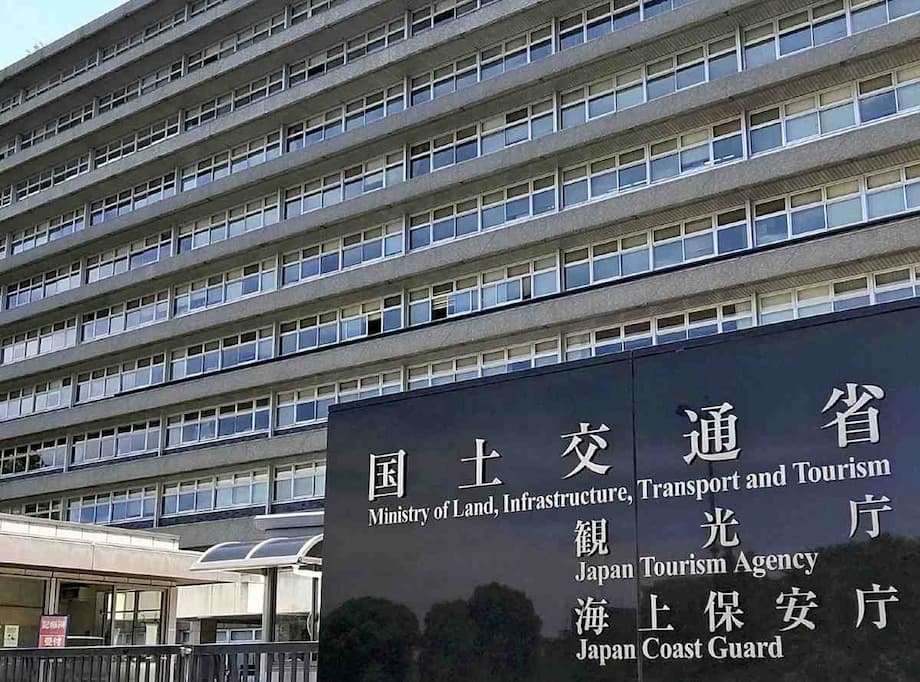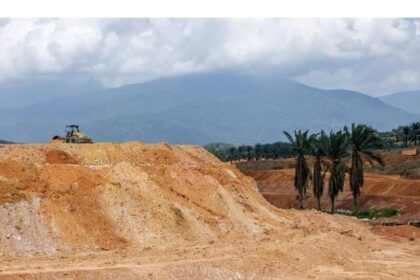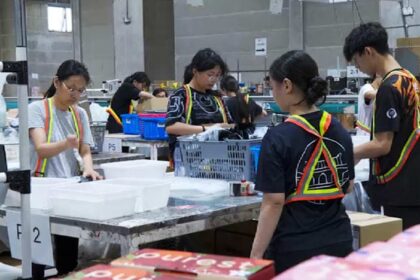Why this plan matters now
Japan is preparing a new model project to keep homes from sitting empty just as a wave of older residents move in with relatives or enter care facilities. The Land, Infrastructure, Transport and Tourism Ministry plans to launch the pilot next fiscal year, working with local governments to turn properties that are vacant, or likely to become vacant, into family housing and community uses such as childcare centers and shared workspaces. The plan aims to ease pressure on working families who face high construction costs for new homes while also tackling the growing stock of neglected houses.
The challenge has become urgent. Government figures show a record 3.85 million neglected vacant homes in 2023, a subset of a much larger pool of empty properties across the country. Broader counts put total vacant dwellings at about nine million, roughly 14 percent of all homes. That share has crept upward as the population shrinks and ages. Empty houses are not only a rural problem. They are increasingly visible in metropolitan areas, where they can drag down neighborhoods, complicate disaster response, and pose safety risks if left to decay.
Demographic data point to a steeper climb in the years ahead. A land ministry survey projects that the number of homes occupied only by people age 85 or older will rise from about 340,000 units in 2023 to roughly 940,000 by 2033 in Tokyo and three surrounding prefectures. In the Kansai region, covering Osaka and Kyoto and adjacent prefectures, the number is expected to jump from about 210,000 to around 580,000 in the same period. Many of those homes could soon fall vacant as residents move or pass away.
Renovating existing homes can offer a faster and more affordable path to ownership than building new. Materials and labor costs have climbed in recent years and financing a new build has become harder for typical child rearing households. The government is betting that channeling modest funds into renovation will both curb urban blight and bring more family friendly housing to market.
How the new subsidy will work
The pilot will target neighborhoods in and around major cities that were developed during the high growth decades from the 1950s through the 1970s. Many of these areas are expected to see a rise in empty houses as older residents downsize or move to care. The ministry, working with participating local governments, will select specific zones where subsidies can have the most impact.
Public money will support renovation rather than new construction. The central government plans to subsidize interior and exterior upgrades, plumbing repairs, and related work needed to return neglected structures to active use. The program is designed to help both current owners who are about to vacate their homes and buyers who acquire empty properties in target areas.
Key eligibility and uses
- Who can apply: Current owners of vacant homes and elderly residents whose houses will likely become vacant after moving in with relatives or into a care facility. People who buy vacant homes in the designated areas and renovate them will also be eligible.
- What the subsidy can cover: Interior and exterior renovation, plumbing repairs, and other work required to bring the property back into safe, livable condition.
- Where it applies: Selected residential zones in and around major cities, mainly in neighborhoods built during the 1950s to 1970s high growth period.
- Intended end uses: Residences for working and child rearing households, childcare centers, community halls, child rearing support facilities, and workspaces.
- Program design: A multi year pilot with the stated aim of expansion to other regions facing similar challenges if results are strong.
Officials expect that many projects will end with renovated homes being sold on the open market or leased as housing for families. A share will be repositioned as community facilities where demand exists, helping ensure that social infrastructure, from daycare to meeting spaces, matches the needs of changing neighborhoods.
Why Japan has so many empty homes
Japan’s vacant houses, often referred to as akiya, reflect a long shift in population and housing preferences. For decades, younger generations have left smaller cities and rural towns for employment in metropolitan areas. Birth rates have fallen, the population has aged, and many homes are inherited by people who do not plan to live in them. Those properties can sit empty for years.
Tax policy has also played a role. Owners often face higher annual taxes if they demolish a home and hold the land empty, which can deter removal of structures that are beyond saving. Weak record keeping in some cases and complex inheritance can leave ownership unclear. When an estate is split among heirs scattered across the country, securing consent for repairs or sale can take years.
Market dynamics add another twist. Japanese homebuyers tend to prefer new properties and the existing stock is frequently valued for land rather than the building. Many houses built during rapid growth decades used materials and standards that are out of step with modern expectations for energy efficiency and seismic safety. Rural akiya that are far from transport, schools, and healthcare are a tough sell even at low prices. Empty houses also disrupt disaster planning. In earthquake and flood zones, neglected buildings can block evacuation routes or create hazards during cleanup.
What akiya means for safety and disaster response
In a disaster prone country, abandoned structures magnify risk. Overgrown lots can hide collapsed roofs and unstable walls. Firefighters and emergency crews can encounter delays when vacant properties block access or when ownership is unclear and authorities cannot act quickly. Reducing the number of neglected houses improves safety and helps cities plan evacuations and infrastructure upkeep with more certainty.
What is different this time
The new pilot leans into prevention and location. It focuses on homes that are about to become empty in metropolitan areas, where demand from families is stronger and where community services can be sustained. That approach contrasts with earlier efforts that relied on matching tenants to already vacant housing, often in places with limited demand.
A revised Housing Safety Net System launched in 2017 sought to register vacant homes as affordable rentals for low income and single seniors. Results fell short of targets. By 2020, registrations were only a fraction of what officials hoped for and many landlords remained wary about rent defaults or dealing with end of life events in their properties. Authorities later simplified registration, reduced fees, eased guarantor rules, and connected property owners with social support groups to monitor tenants. Those steps helped but did not unlock the broader stock.
Lessons from earlier policies
Two takeaways stand out. First, incentives alone may not sway owners unless the financial and practical burden is light. Second, focusing on locations with stronger demand improves the odds that renovated properties will be occupied quickly and maintained. The new pilot addresses both points by underwriting renovation in designated urban zones and by steering some stock toward childcare and community uses where needs are clearer.
Potential benefits for families and communities
For working families, this pilot could open a path to ownership or larger living space without the sticker shock of a new build. Renovation can be staged, and buyers may be able to prioritize kitchens, bathrooms, and insulation first, then address interiors over time as budgets allow. Turning a neglected house into a comfortable home also returns value to the street and signals that the neighborhood is alive and cared for.
Officials also hope to fill service gaps. Converting some properties into childcare centers, child rearing support hubs, and small community halls can ease pressure on wait lists and give parents shorter commutes. Shared workspaces can reduce travel time for remote and hybrid workers, keeping spending in the neighborhood.
A ministry official underscored the family focus and the affordability challenge. The official said construction price inflation has made new homes harder to afford for typical child rearing households. The official added:
Through this revitalization project, we aim to curb the rise in vacant homes and create a comfortable living environment for families with children.
There are environmental gains as well. Reuse of existing structures avoids demolition waste and preserves the embedded carbon found in foundations and frames. Upgrading older houses with better insulation, efficient windows, and modern heating and cooling can cut energy bills and improve comfort during hot summers and cold winters.
Where and when the pilot starts
The model project will begin in selected neighborhoods in and around large cities, with an early focus on suburbs and new towns built between the 1950s and 1970s. These are the places where many pioneers of postwar growth bought homes, raised families, and are now aging in place. The ministry will work with local governments to identify target areas where a cluster of properties can be moved back into productive use.
The pilot is slated to start next fiscal year, which in Japan begins in April. It will run for several years to gauge uptake and outcomes, with the stated aim of expanding to other regions that face similar demographic and housing pressures. The ministry has requested several hundred million yen in the upcoming budget to fund the initial round of subsidies. That figure signals a practical pilot scale to test what works best before broad rollout.
In practical terms, the timeline for a property could span months rather than years. Once an owner or buyer in a selected zone clears eligibility, scopes work, and secures contractors, many upgrades can be completed quickly. That speed matters for families, especially those juggling childcare and work.
Challenges and risks
Many older houses will require more than a cosmetic refresh. Some built during rapid growth decades may need structural reinforcement, new roofs, or rewiring to meet modern safety standards. Narrow streets and hillside lots in some suburbs can complicate construction access. Upgrading for quake resilience is essential in many cases, which adds cost and requires skilled labor.
Cost pressures are real. Builders face higher prices for materials and labor. Japan also has a tight labor market in construction, transport, and care work. Tomoya Suzuki of the NLI Research Institute pointed to the wider workforce issue and the need for openness to talent. Suzuki said:
There is a serious labor shortage, mainly in the transportation and nursing care sectors. To maintain Japan’s society and economy, we need to have a perspective on how Japanese and foreign workers can coexist in harmony.
Staffing matters because renovated homes only solve part of the problem. Childcare centers and elder care facilities need trained workers. Expanding capacity in these services will depend on local hiring and, in some cases, wider recruitment.
Owner participation is another constraint. Some families are reluctant to part with a house that holds memories, even if they no longer live there. Others face complex inheritance disputes or unclear registry data, which can slow or block renovation. Tax policy can nudge owners to keep deteriorating structures rather than demolish, which reduces options if a building is beyond repair.
Financing also plays a role. Banks often place higher value on land than on older structures and some buyers may find that loans for renovation are harder to secure than loans for new builds. The pilot’s design seeks to offset part of that gap with public funds, but the balance will still depend on local market values and lender practices.
Adaptive reuse and local momentum
Japan has been experimenting with ways to match empty homes with people who want them. Municipal akiya banks list properties and connect buyers with owners. Some towns have gone further, offering subsidies, cash for relocation, or even no cost houses in exchange for a commitment to settle and invest sweat equity. These local programs have restored homes as cafes, guesthouses, artist studios, and family dwellings.
Academic research on adaptive reuse points to several patterns. In dense urban settings, vacant houses often find second lives as food and lodging businesses where demand is steady. In mixed settings with historical buildings, reuse can blend preservation with modern operations that benefit residents and visitors. In scenic rural areas, traditional homes attract tourists seeking authentic stays, even when the surrounding population is sparse. Across all settings, careful planning that fits local demographics, transport access, and building age tends to produce better outcomes.
Foreign interest has grown as the weak yen and social media spotlight make traditional houses look tempting. The reality is that most purchases require patience, language skills, and local support to navigate permits and contractors. The new pilot is primarily aimed at domestic households and community services in urban areas, but the broader momentum behind reuse can lift skills and know how across the market.
Key Points
- Japan will launch a multi year pilot next fiscal year to subsidize renovation of vacant and soon to be vacant homes in selected urban and suburban neighborhoods.
- The Land, Infrastructure, Transport and Tourism Ministry will partner with local governments to designate zones and support interior, exterior, and plumbing upgrades.
- Eligible applicants include current owners whose homes are about to be vacated and buyers who acquire and renovate empty properties in target areas.
- End uses include family housing, childcare centers, community halls, child rearing support hubs, and shared workspaces.
- Government data show 3.85 million neglected vacant homes in 2023, within a total of about nine million vacant dwellings nationwide, or roughly 14 percent of the housing stock.
- Projections indicate a sharp rise in homes occupied only by people 85 or older in the Tokyo and Kansai regions by 2033, which could add to vacancies.
- Past schemes that relied on registering empty homes for affordable rentals fell short of targets, reflecting owner concerns and weak demand in some areas.
- The pilot emphasizes prevention, location, and reuse. It aims to make ownership more attainable for families, reduce urban blight, and add community services while testing approaches for wider expansion.












